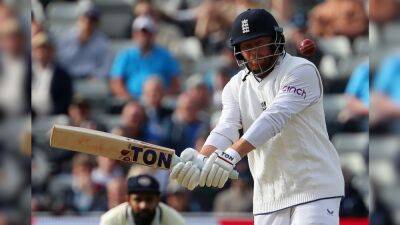Anatomy of Jonny Bairstow's brilliant blitz... and how it fell just short of 1902 record
When Jonny Bairstow walked out to bat after tea on the fifth day at Trent Bridge, England still required 160 from 38 overs, and New Zealand just two wickets away from the tail. Even on Trent Bridge’s benign wicket and lush outfield, it remained a precarious position for England.
But where previous England sides have seemed to look for danger, England’s new mantra is to look only for opportunity. And so as Bairstow resumed on 43 from 48 balls, a cheese-and-ham toastie and coffee inside him, he gave no thought to consolidation. There was a Test match to win.
There was no attempt at chicanery in Matt Henry’s plans to Bairstow after tea. With a packed leg side field, Henry would pound the pitch, attempting to bounce Bairstow out. Bairstow was braced for what to expect, and gave no thought to trying to duck and weave out of the way. Instead, he trusted in his timing, the true wicket and the ground’s short boundaries to do the rest. Three balls into the evening session, Bairstow had thumped two short deliveries for four. Imperceptibly, the crowd - thrilled by Trent Bridge's decision to award final day tickets for free - sensed another audacious England run chase in the offing.
Much of this belief was underpinned by the identity of Bairstow’s partner at Trent Bridge: Ben Stokes, who underpinned both the Headingley Ashes victory three years ago and the World Cup final victory. Yet Bairstow was about to relegate Stokes, however fleetingly, to the role of supporting actor.
It has been Bairstow’s fate that, during his outstanding international career, many of his signature performances for England have been overshadowed by even more outrageous feats from his teammates. His maiden Test century, 150* in Cape Town, existed in the





